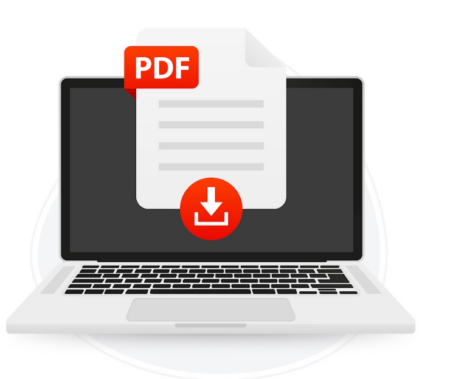Navigating the complexities of PDF annotations can be daunting. Users often grapple with issues such as unclear comments, overwhelming numbers of notes, and the challenge of effectively conveying feedback.
This article offers a straightforward guide to mastering PDF annotations. It focuses on best practices that ensure clarity, relevance, and efficiency in document reviews. Whether it’s student deciphering peer feedback or a professional streamlining collaborative project, this guide addresses these hurdles head-on. The aim is to enhance the use of PDFs as a tool for clear, effective communication and cooperation.

Understanding PDF Annotations
PDF annotations are integral to enhancing the effectiveness of digital documents. These footnotes, which include texts, highlights, underlines, and various shapes, allow users to add detailed context and emphasize significant portions of a document. This capability is especially valuable when one needs to edit PDF files, ensuring that changes and explanations are clearly communicated and understood in academic, professional, and business contexts.
Effective use of annotations, however, hinges on precision and clarity. Misinterpretations often stem from ambiguous or poorly placed comments. Understanding the different types and their specific applications is vital. By skillfully utilizing these tools, users can ensure that every mark made on a PDF document aids in enhancing understanding and facilitating more effortless communication.
Annotating For Different Purposes
The approach to annotating PDFs can vary significantly depending on the context and purpose of the document:
- Academic settings – Annotations in educational documents often involve critical analysis and extensive feedback. Here, focus on using annotations for in-depth comments queries and highlighting key concepts or areas for improvement.
- Business documents – In the business realm, remarks are typically used for reviewing reports, proposals, and contracts. Prioritize clarity and conciseness in comments, ensuring they’re professional and to the point. Use footnotes to suggest edits, ask clarifying questions, or approve content.
- Creative fields – When annotating documents like design drafts or innovative concepts, remarks can be more subjective and open-ended. Use them to provide feedback on aesthetics, offer creative suggestions, or discuss potential changes.
Each of these contexts demands a tailored approach to annotations, ensuring they effectively address the specific needs and goals of the file and its intended audience.
Best Practices For Creating Annotations
When it comes to crafting annotations in a PDF, several best practices stand out for ensuring that they’re practical and serve their intended purpose:
- Be clear and concise – Strive for clarity in every comment. Use uncomplicated language and clear symbols to convey your message without ambiguity.
- Stay relevant – When annotating a document, ensure remarks directly reference the content. For example, if commenting on a sales report, avoid unrelated suggestions like improving training. Instead, question how losing a significant client impacted the revenue decline. Comments aligned to the document provide meaningful feedback.
- Maintain consistency – Apply consistent colors and styles across similar annotation types. This approach improves the document’s visual appeal and helps in quickly identifying and categorizing annotations.
Adopting these practices transforms the process of annotating PDFs. It elevates the quality of feedback and review, making every comment a valuable contribution to the file’s clarity and effectiveness.
Collaboration Through Annotations
Collaboration through annotations in PDFs is a nuanced process that requires thoughtful approaches to ensure effective teamwork and clear communication:
- Establish clear annotation guidelines – Before starting, agree on rules for annotation types, colors, and symbols. This uniformity helps in avoiding confusion and ensures that everyone is on the same page.
- Use layered feedback –When multiple people annotate the same document, consider using layered feedback. This approach involves categorizing annotations by reviewer or type, making it easier to navigate through different sets of feedback.
- Encourage open dialogue – Foster an environment where team members feel comfortable discussing and questioning each other’s footnotes. This open dialogue can lead to more constructive responses and innovative solutions.
By adopting these approaches, teams can maximize the benefits of PDF annotations, turning them into an effective tool for collaborative review and enhancing the overall quality of the work.
Ethical Annotation Practices
Ethical and legal considerations are integral to ensuring responsible and lawful use of this powerful tool:
- Prioritize privacy in sensitive documents – When annotating documents containing personal or sensitive data, it’s essential to handle such information ethically. For instance, if commenting on a medical report, avoid specifics like “Patient X responded well to medication Y.” Instead, make general statements like “The treatment plan aligns with best practices for this condition.” Adhering to data protection laws and privacy policies is a legal and moral obligation. Annotations should provide constructive feedback while maintaining confidentiality.
- Respect intellectual property – Comments on documents that include copyrighted or proprietary content call for a careful approach. It’s important to respect intellectual property rights, ensuring that your remarks do not overstep legal boundaries.
- Maintain transparency in collaborative settings – In a collaborative environment, clearly indicating who’s responsible for each annotation enhances communication and fosters constructive discussions, making the review process efficient and respectful.
Integrating these ethical and legal aspects into your approach to PDF annotations aligns with legal standards and enhances the trustworthiness and professionalism of the annotation process.
Conclusion
Adopt the strategies from this guide to transform your approach to document reviews and feedback significantly. These methods elevate the standard review process into an opportunity for clear communication and impactful teamwork.
Individuals are encouraged to bring these techniques into their upcoming projects, enhancing their participation in the digital dialogue. Each well-considered contribution to a document enriches the collaborative experience. Ready to improve your next PDF project? Embrace these insights and witness the difference in your collective efforts.